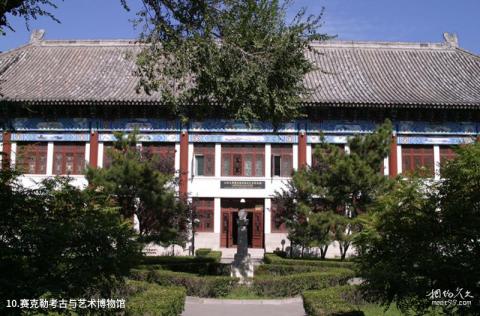
Introduction to the Sackler Museum of Archeology and Art: The Sackler Museum of Archeology and Art is the first archaeological museum in a Chinese institution of higher learning. It is located in the Whooping Crane Garden on the campus of Peking University. The building is an antique building, consistent with other architectural styles in the school, simple and elegant. The ground was laid in 1986 and the museum was officially opened on May 27, 1993. It was built in cooperation with Peking University and American friend Dr. Arthur Sackler. The exhibition hall covers an area of about 2,000 square meters, and the collection includes: stoneware, bronzeware, oracle bones, pottery, porcelain, calligraphy and painting, inscriptions and other major categories. The basic display is divided into seven parts: the Paleolithic Age, the Neolithic Age, the Xia, Shang and Zhou Dynasties, the Warring States Period, the Qin and Han Dynasties, the Three Kingdoms and Two Jin Dynasties, the Northern and Southern Dynasties, the Sui and Tang Dynasties, and the Song, Liao, Jin, Yuan and Ming Dynasties. There are currently more than tens of thousands of collections in the collection, most of which are typical specimens from various periods of Chinese archeology. Later, they were gradually collected from the Peking University Museum and the Yenching University Prehistory Museum. After the 1950s, the archeology major of Peking University added teaching specimens obtained from field archaeological work sites, items allocated and donated by various domestic cultural relics, archaeological institutions and museums, and cultural relics donated by cultural relic collectors at home and abroad.
